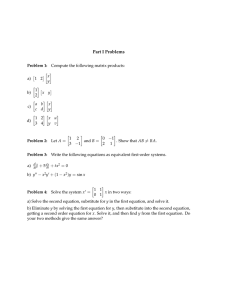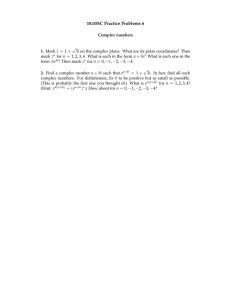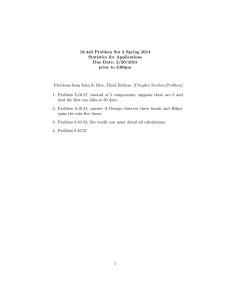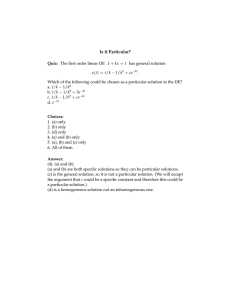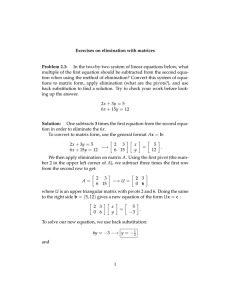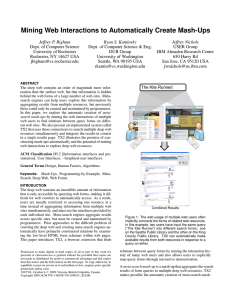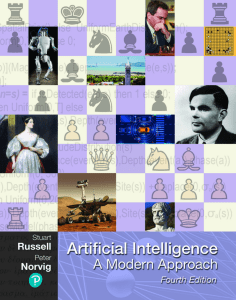Part
advertisement
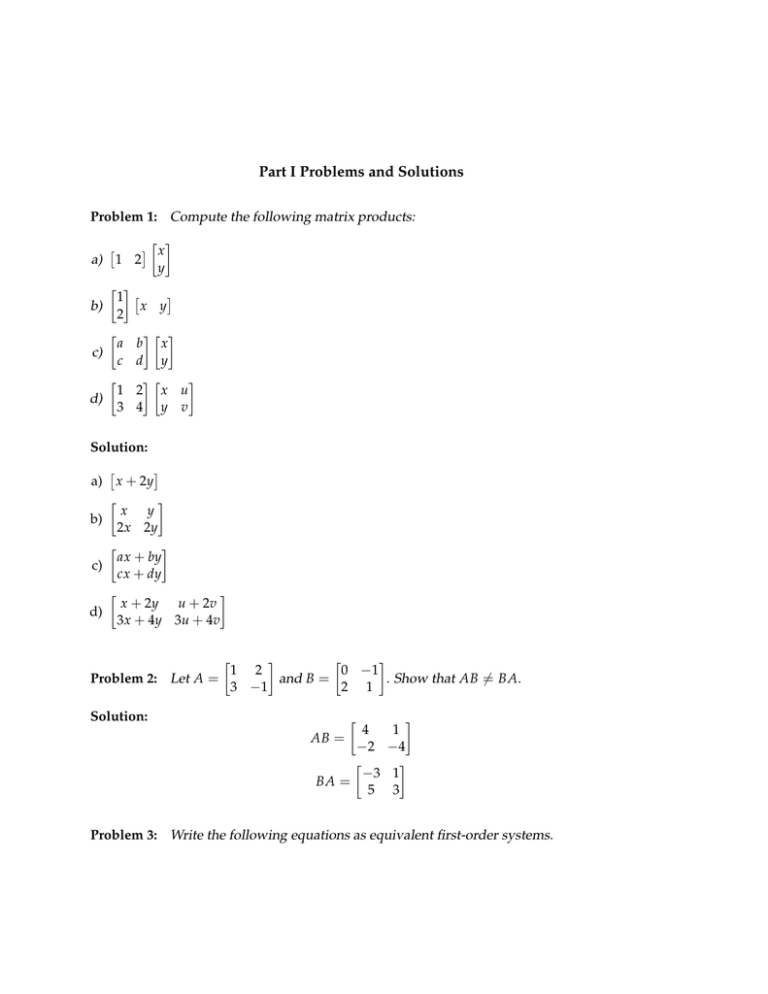
Part I Problems and Solutions Problem 1: Compute the following matrix products: a) b) c) d) � � � x 1 2 y � � � 1 � x y 2 � �� � a b x c d y � �� � 1 2 x u 3 4 y v � Solution: � � a) x + 2y � � x y b) 2x 2y � � ax + by c) cx + dy � � x + 2y u + 2v d) 3 x + 4y 3u + 4v � � � � 1 2 0 −1 Problem 2: Let A = and B = . Show that AB �= BA. 3 −1 2 1 Solution: � 4 AB = −2 � −3 BA = 5 � 1 −4 � 1 3 Problem 3: Write the following equations as equivalent first-order systems. Part I Problems and Solutions a) d2 x dt2 OCW 18.03SC 2 + 5 dx dt + tx = 0 b) y�� − x2 y� + (1 − x2 )y = sin x Solution: a) x �� + 5x � + tx2 = 0 → x � = y, y� = −tx2 − 5y b) y�� − x2 y� + (1 − x2 )y = sin x → y� = z, z� = ( x2 − 1)y + x2 z + sin x Problem 4: Solve the system x� � � 1 1 = x in two ways: 0 1 a) Solve the second equation, substitute for y in the first equation, and solve it. b) Eliminate y by solving the first equation for y, then substitute into the second equation, getting a second order equation for x. Solve it, and then find y from the first equation. Do your two methods give the same answer? Solution: � �� � �� � x 1 1 x = y 0 1 y or x � = x + y, y� = y. a) From the second equation, y = c1 et , so x � − x = c1 et , so the solution is x = c2 et + c1 tet , y = c1 e t . b) Here we eliminate y instead. y = x � − x so ( x � − x )� = x � − x → x �� − 2x � + x = 0 → (m − 1)2 = 0 (char. eqn.). Thus, we have x = c1 et + c2 tet , y = c2 et (since y = x � − x). This is the same as before, with c1 , c2 switched. 2 MIT OpenCourseWare http://ocw.mit.edu 18.03SC Differential Equations�� Fall 2011 �� For information about citing these materials or our Terms of Use, visit: http://ocw.mit.edu/terms.
